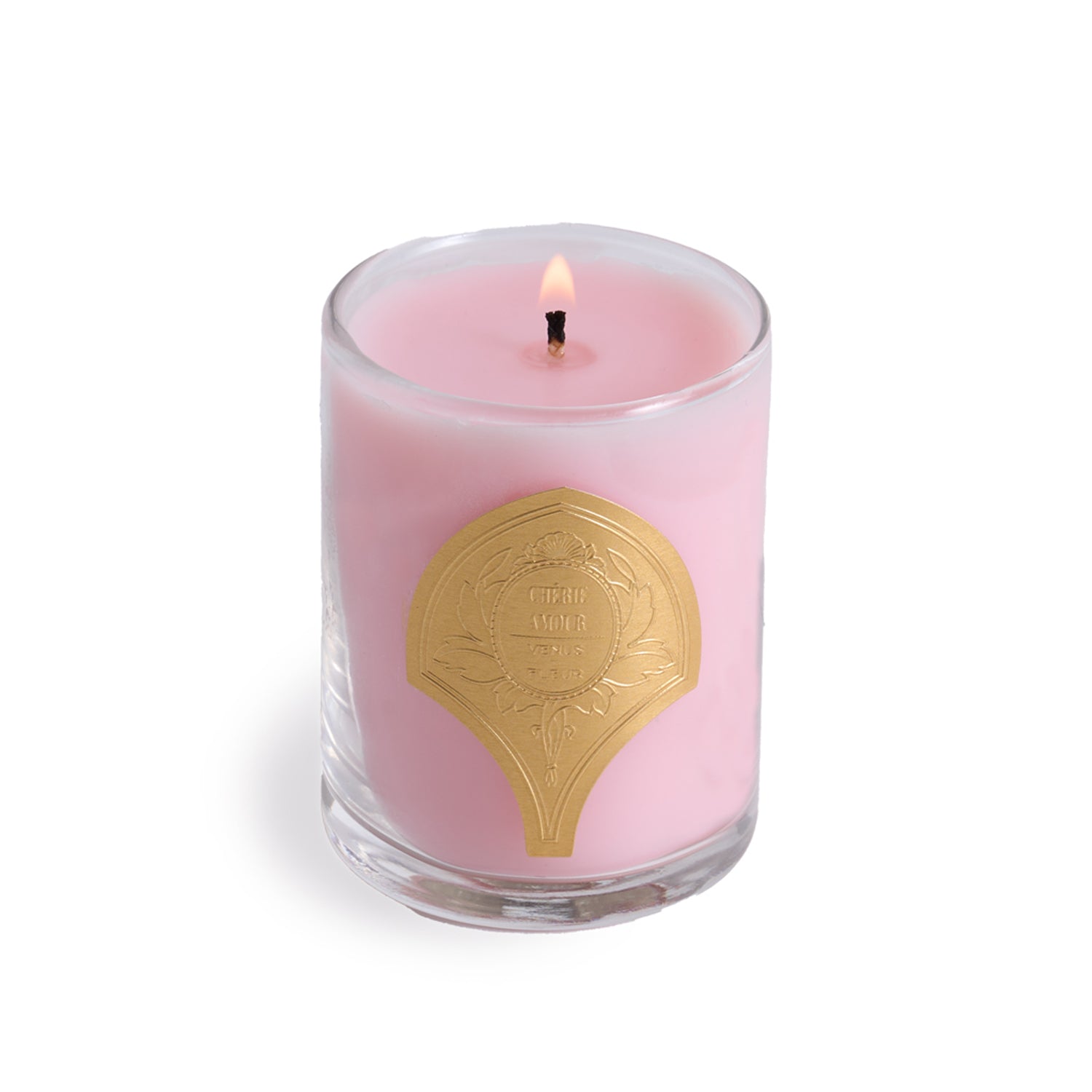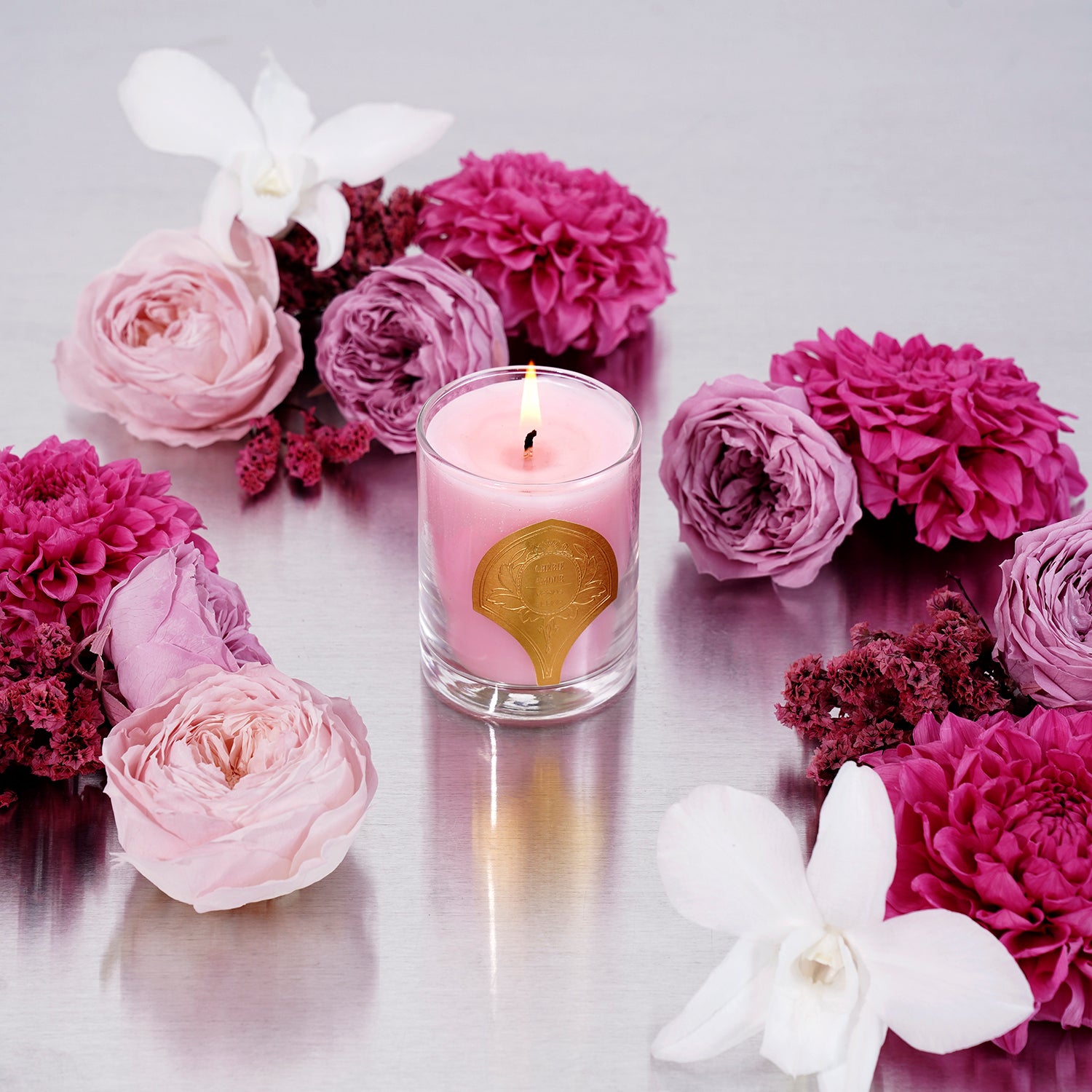

The answer to the question, “How many petals does a rose have?” is one of life and death if you find yourself playing a game of “They-love-me, they-love-me-not.” But the answer is not so black and white. Roses, like people, come in a splendid variety of shapes, sizes, and variations.
Rather than plucking them apart, however, we at Venus ET Fleur® prefer to display our roses in magnificent arrangements. Roses serve as a timeless and elegant gift for any number of occasions, from the celebratory to the truly romantic.
In this article, we will answer the question posed above, provide a few fun and different uses for rose petals in your day-to-day life, and some of our favorite arrangements that feature this unforgettable flower.
Today, your average rose on the market will have 20-40 petals in its bloom. This is a far cry from wild-growing roses, descendants of rosa chinensis, which sport a mere five petals which, though slight in comparison, makes for a no less radiant flower.
Rosa Chinensis is first known to have been cultivated around the year 500 BCE in the rose gardens of Imperial China. Today, however, there are over 30,000 varieties of much sought-after bloom. Some roses grown today can feature as many as 60-80 petals, although these are known to wilt faster than most others—this is for the simple reason that more petals expend more energy, giving these roses a shorter lifespan than others. Flowers such as these only thrive in human-made growing conditions.
The dramatic increase of the average rose’s petal count petal from five to 25 didn’t occur overnight, however. It took centuries of cultivation, hybridization, and technological innovation.
In the early part of the 18th century, rose cultivation saw huge advancements thanks to the work of Josephine Bonaparte, then-wife of Napoleon. Her world-renowned flower garden was named Malmaison, and her favorite flower was the rose. She sought the rarest varietals from all over the world and commissioned the best gardeners in France to experiment with hybridization. By 1813, the 650-acre garden boasted nearly 200 different varieties of rose, making Paris the de facto rose capital of the world.
The rose’s popularity across the world only exploded from then on. By 1830, there were over 2,500 rose varieties available in Paris, in large part due to the contributions of Josephine Bonaparte and her gardeners at Malmaison. After her death, the growing infrastructure she’d built continued innovating, eventually producing the Hybrid Tea Rose in 1867, which remains one of the most popular rose types to this day.
As growing methods have grown more and more sophisticated, we have seen roses with higher and higher petal counts, new and vibrant colorations, and, as we’ve said, thousands of new variations on this timeless bloom. It’s only natural that, in the 21st century, growers and flower merchants have attempted to tackle the question often asked by rose-lovers: can we extend the natural lifespan of a rose?
Your average bouquet of roses will last one week in water. It may be possible to make the most out of that wonderful arrangement by replacing the water daily and by storing them in a cool, dry place. But these fastidious measures will only keep your flowers fresh for so long until they begin to wilt and eventually wither.
But at Venus ET Fleur, we can offer the magic of roses that will last for a year with the proper care. Our innovative Eternity Roses represent the state-of-the-art, surpassing, we believe, Josephine Bonaparte’s wildest dreams. These delicate, fragrant blooms are made from 100-percent real roses sourced from the rose fields of Ecuador.
Thanks to the vibrant rays of equatorial sunshine that they enjoy year-round, these blooms are more voluminous and petal-plentiful than your average market roses. And thanks to the innovative preservation methods we’ve developed over the years, they will still last for a full year given the proper maintenance.
Celebrate the richness and redness of each petal with our resplendent Le Mini Round, one of the best-selling pieces out of all our special collections. This arrangement showcases a singular, radiant Eternity Rose ensconced within one of our novel Parisian hatbox-inspired vessels. Not only does this classic piece personify elegance itself, but it also carries the same rich fragrance we expect out of a rose.
If you want to enrich your home with the perfumed brilliance of Real Roses That Last A Year®, then we encourage you to take a look at our special collections today!
Now that we know how many petals are in your average rose, we thought it would be a treat to show you a few fun uses for fresh rose petals that you can take advantage of from the comfort of your own home. From the decorative to the practical, we think you’ll be shocked at the different things you can do thanks to the petals of this incredible flower.
The first thing to note when utilizing rose petals is that they are extremely fragile and don’t keep long. For that reason, it is much easier to work with dried rose petals than fresh. We recommend using fresh rose petals and drying them at home. This can be accomplished through five easy steps:
With that out of the way, let’s look at our favorite uses for these beautiful and versatile petals!
Both the simplest and perhaps the most practical item on this list is rose water! Equal parts cosmetic and therapeutic, rose water can be used in homemade beauty products or for simple aromatherapy. All this takes to make is a few fresh rose petals and some filtered spring water.
Rose water will keep for up to six months, so this can be an economical way to get the most fragrance-per-mile out of those fresh blooms, so to speak.
Place a few drops on your wrist for a delectable homemade fragrance for yourself and others to enjoy. Pour a little bit more into your bath to create an island of soothing calm and relaxation.
Turning your home-dried rose petals into potpourri is simplicity itself and will allow those long-faded blooms to fill your home with lasting fragrance.
This can be as simple as mixing your dried petals in a bowl with complementary scents, in which regard we particularly recommend: clove, star anise, dried orange peel, or cinnamon sticks.
If you want to go the extra mile, mix these up into decorative sachets and tie them closed with a ribbon. These can make for handsome countertop accents and can also serve smartly in a linen closet or sock drawer. The possibilities are limited only by your imagination!
Infusing oil with your rose petals is a somewhat lengthier process, taking about three to four weeks, but it can result in a positively delightful lip balm, particularly when combined with peppermint or sage for a little extra pop.
For oil, we prefer sunflower oil, but there are plenty of alternatives. Olive oil, avocado oil, and apricot kernel oil are all safe and sufficient options for your lip balm.
Though each rose has a limited number of petals, in our experience, the joy and pleasure we can reap from these fragrant flowers are nearly limitless. Whether you want to grow your own roses, experiment with dried rose petals, or are simply rose-curious, we hope this article has helped teach you a few new things about our favorite flower.
If, as is likely, you’re looking for a floral arrangement to give as a gift—whether of romance, gratitude, or something in-between, you can’t go wrong with one of our handcrafted Eternity Rose arrangements.
Always remember, there are so many different ways to enjoy these elegant blooms. Continue reading our blog for more facts, suggestions, and floral innovations to come.
How many petals does an average rose have?
An average rose on the market typically has between 20-40 petals, though some varieties can have as many as 60-80 petals.
What is the difference between wild-growing roses and cultivated roses
Wild-growing roses, like Rosa chinensis, usually have five petals, while cultivated roses can have many more, thanks to centuries of hybridization.
What are Eternity® Roses and how long do they last?
Eternity® Roses are real roses preserved to last up to a year with proper care. They maintain their natural beauty and fragrance during this time.
Who played a significant role in the development of modern rose varieties?
Josephine Bonaparte, wife of Napoleon, greatly influenced rose cultivation in the early 18th century, expanding the variety of roses in her famous Malmaison garden.
What are some creative uses for rose petals?
Rose petals can be used to make rose water, homemade potpourri, and even lip balm. Dried petals are especially versatile for home projects.
Sources
A Rose With Any Other Number of Petals… | Fine Gardening
Facts About Rose Petals | SFGate
Cuttings; When Malmaison Celebrated the Rose’s Beauty | NY Times